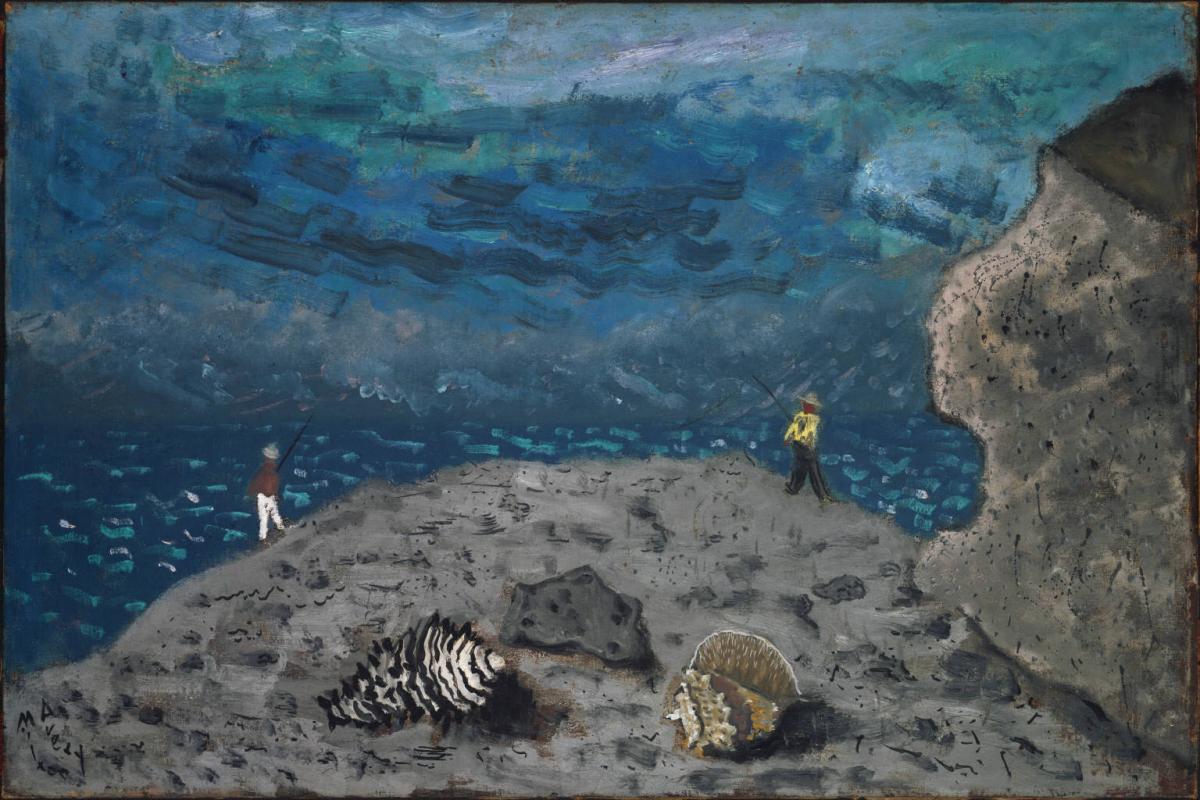Shells and Fishermen
Milton Avery ( 1941 )

Often Avery’s ideas for paintings came from one of the countless sketches he made on summer travels. His numerous sketchbooks, not to mention quick notations on scraps of paper or the back of an envelope, record his response to pleasures large and small, near and far, from a simple still life to an expanse of sea or hills. Avery would typically choose to focus on a telling detail like the seashells acquired on his trip to California as revealed in Shells and Fishermen. Objects such as seashells as well as his sketchbooks allowed Avery to bring nature back with him to the city. They also focused his distillation of the experience into a few chosen mementoes.
The 1940s saw Avery crystallizing his visual experience into increasingly commanding works that began to secure his position as a major American modernist. Duncan Phillips was especially attracted to Avery’s works of this period, for his flattened shapes had become brighter in color and more varied in texture. In Shells and Fishermen, matte areas in harmonious tones of blue and gray are detailed with gestural brushstrokes. While the background includes broad areas of blue sky and water, the immediate foreground becomes the focus of the composition with enlarged and highly detailed shells on cool gray sand. Two figures—fishermen, as the title suggests—stand in the distance on the edge between water and land. Avery seems to have placed these figures on either side of the composition in order to frame and to give precedence to the centralized shells in the foreground. For all the glory of his color and the eloquence of his line, Avery never gives in to decoration. His spare and rigorous approach to painting produces works that are both expansive and defined, qualities exemplified in Shells and Fishermen.